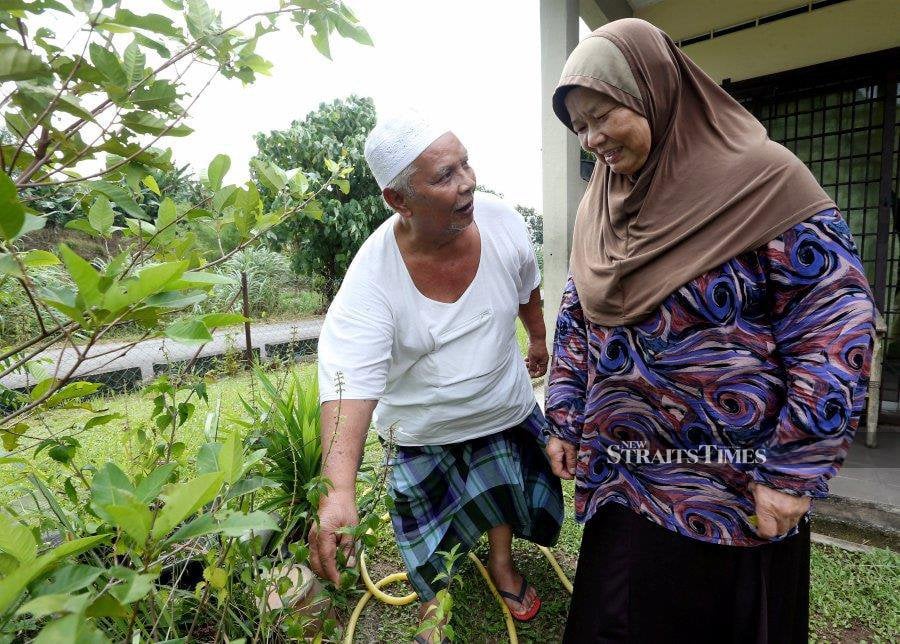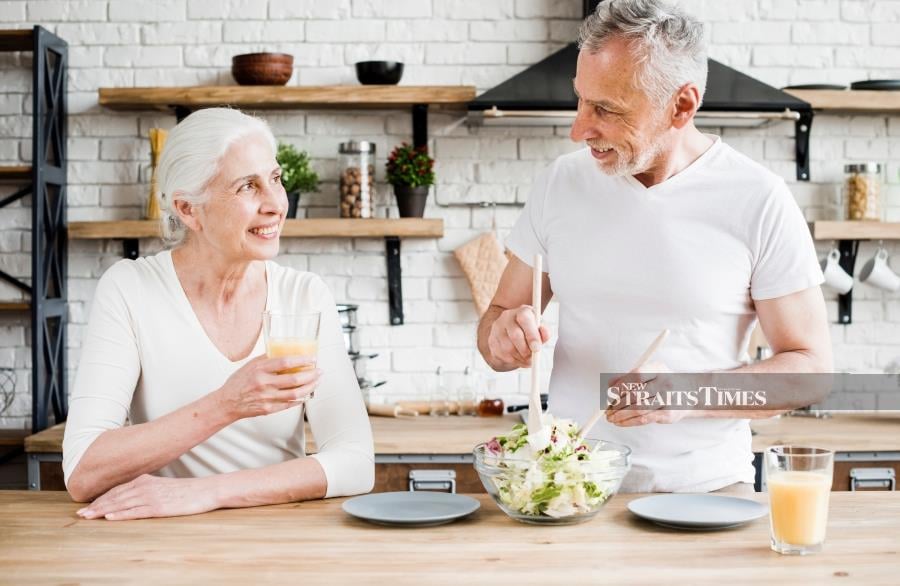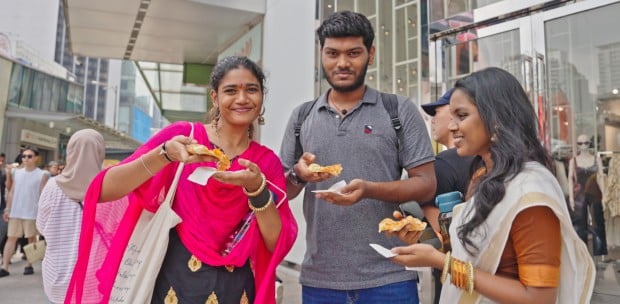Making spaces more elderly-friendly helps seniors stay healthy and independent, writes Aznim Ruhana Md Yusup
WHILE ageing is inevitable, certain physical and mental discomforts become more noticeable and much harder to brush aside as the years add up
Amidst the gradual loss of energy, physical strength or lucidity, older adults often find themselves in an environment that is more hostile to them each day. What started as an irritation can turn dangerous.
The home that was once a sanctuary has turned into a burden and safety hazard. Corridors inexplicably become more difficult to navigate. Household tasks take more time and effort to complete. Distances for walking seem further and destinations take longer to reach, even when the surroundings are familiar.
While our society understands the need to make environments safer for children, there is less of a conscious effort to protect people from harm as they age. With rising life expectancy and Malaysia becoming an ageing society, it is time to seriously consider the specific needs of older adults.
This is not the same as designing or catering to senior citizens who are ill or immobile and require specialised care. For older folks who are generally healthy, it’s worth finding out what can be done so they stay healthy and remain in this position to maintain their independence and quality of life.
Related to this is a 2017 study from Universiti Malaya, which found that the majority of the older population in the Klang Valley prefer to age in their own home.
Study co-author Dr Ainoriza Mohd Aini from UM’s Built Environment Faculty explains: “We asked 464 people who are nearing retirement age on their living plans when they retire and 66 per cent say they have no intention of moving out of their current residence.”
It’s likely they feel attached and are comfortable in their homes. They are also already familiar with the neighbourhood and its amenities.
“Most respondents also prefer to live near their children but not with them. They want to be independent in their own house and their children independent from them, but still within reach for personal comfort.” She was speaking at the 9th Malaysian Conference on Healthy Ageing, last month.
HOME COMFORTS
But are our homes designed to meet the needs and comfort level of the elderly? It appears not. According to Ainoriza, most respondents expect they will need to make certain home improvements as they age, especially in the bathrooms and kitchen.
The study has suggested a government programme that provides financial assistance for the required renovations, which can be expensive. It also calls for active action by government, industry providers, families and communities in ensuring that shared facilities are more elderly-friendly.
A good example that I have noticed is the presence of chairs in mosques and surau, which is almost ubiquitous nowadays. This is to help Muslim faithfuls with knee problems — who are usually older — to pray, as they have difficulties being on the ground to prostrate.
But this is sometimes misused, perhaps due to a lack of awareness. Some worshippers use it to hold their belongings, and while it is a chair, its main purpose is not for sitting.
With regards to the facility itself, challenges include stairs or steep steps, slippery ablution areas and a confusing layout. Falling can be a life and death matter to the elderly, and while a person who is lost can retrace their steps, this is a much bigger effort when the individual is not agile.
There is also the tendency to plan buildings around roads for cars rather than pedestrians, even at mosques with high foot traffic. But moving vehicles are a problem for people with poor eyesight and slow reaction time.
The lack of though in these areas means challenges for older adults in their daily life. But providing chairs is a commendable start, and shows what steps people can take to make spaces more elderly-friendly.
NOTES FOR IMPROVEMENTS
Such changes can start at home and in a separate interview, Ainoriza explains that age-proofing the house do not need to be major or even noticeable. But it needs to take into account some the risks faced by senior citizens, such as falls.
There are also physical and mental changes that come with ageing, including balance issues, declining hearing and vision, mild cognitive impairment and other effects of age-related diseases. But this differs from one individual to the next.
“You should only instal ramps when it’s needed and most older adults don’t,” says Ainoriza. “There is also an argument against grab bars because it doesn’t help people who rely on walking sticks. It’s also hideous,” she adds.
For houses with elderly occupants, it’s important that the space is free of clutter, especially in areas that people walk on. Carpets are not elderly-friendly because one can trip on them. These need to be taped down so they don’t move and the corners don’t curl up.
Good lighting is also important, be it natural or artificial. A well-lighted space improves mood and makes it easier for people to read or gauge distances. There should be visual contrast between connecting rooms of different heights, such as in a split level house.
Meanwhile, light switches may be a minor consideration, but it’s better to have a bigger switch than smaller ones that are pushed by a single finger.
“Bigger switches require less effort and are safer to use. When your hands are wet you can push it using your elbow, for example. This reduces the risk of electric shock,” says Ainoriza.
She adds: “There should also be minimal things around the bed because people can fall when they get out of bed. They could have just woken up and are perhaps groggy and imbalanced. They should then use the bedside table for support.”
In the kitchen, she suggests a working counter space that can be used with a chair, meaning it has to be of a certain height and without cabinets underneath.
“This way the elderly person can sit down when doing their work instead of standing up, which may be tiring after some time. But some people work around this by taking their vegetables and whatnot to prep at the dining table,” she says.
Efficient storage is important to keep the kitchen clutter-free and she suggests installing a rotating carousel shelf or Lazy Susan inside the cabinet so that it is easier to find things. Slide out drawers are also more useful than stationary shelves. Having appliances like ovens on the wall at eye level makes cooking safer.
Bathrooms are a concern for the elderly because of the risk of falls, but these days there are many options for non-slippery tiles that people can use. It may also be useful to instal a shower seat and bathroom support bars. Sink taps and toilet flush handles may changed to long-lever versions.
She adds: “A key aspect when designing for the elderly is to have different points of interest around the house that encourages movement and socialising. Regardless of age, physical activity and human relationships are important for good health.”
So instead of staying in one room, walk to eat at the dining table with others in the house and watch television together in the living room. Gardening is also a good activity as it gets people out of the house, where there is a chance to talk to the neighbours.
Case study: Baitul Maab
AS a senior lecturer specialising in estate management, Dr Ainoriza Mohd Aini often does consulting work for private housing developers. One consultation job took her to an Islamic-based retirement home in Pahang.
Baitul Maab in Temerloh is created for Muslims, aged 45 or older, who rent or purchase a single room unit at low prices. The residents must be mobile and healthy, and they are required to participate in the facility’s religious programmes.
“Each unit is fitted with a bed, a bathroom and a small kitchen. Changes that we made include having benches outside the door. This is something we noticed when we visited homes for the elderly in Korea because it helps them to put on or take off shoes more comfortably.
“We also changed the doors from folding doors to trackless, hanging sliding doors so there’s less risk of tripping. From the existing flourescent lamps, we installed brighter lights.”
Ainoriza’s team also changed the floors in the bathroom to textured, homogenous tiles that are less slippery and installed handlebars to help with support.
She says the facility wasn’t designed with elderly comfort or safety in mind, hence the use of regular building materials.
Most residents didn’t even mind things like dim lighting because they often aren’t in their rooms, she adds. It seems that they have learnt to live with the deficiency in the design.
“Another thing we did is start a garden, so residents will have something to do in between their religious classes,” she says. “It’s been established that gardening can reduce dementia. You become more active because you need to move around to garden and plants naturally make people happier.”
But some habits die hard. She remembers removing carpets and foot rugs from the units to avoid them from becoming trip hazards but the residents quietly put them back in. Still, she hopes they understand the importance of keeping their space clutter-free.










